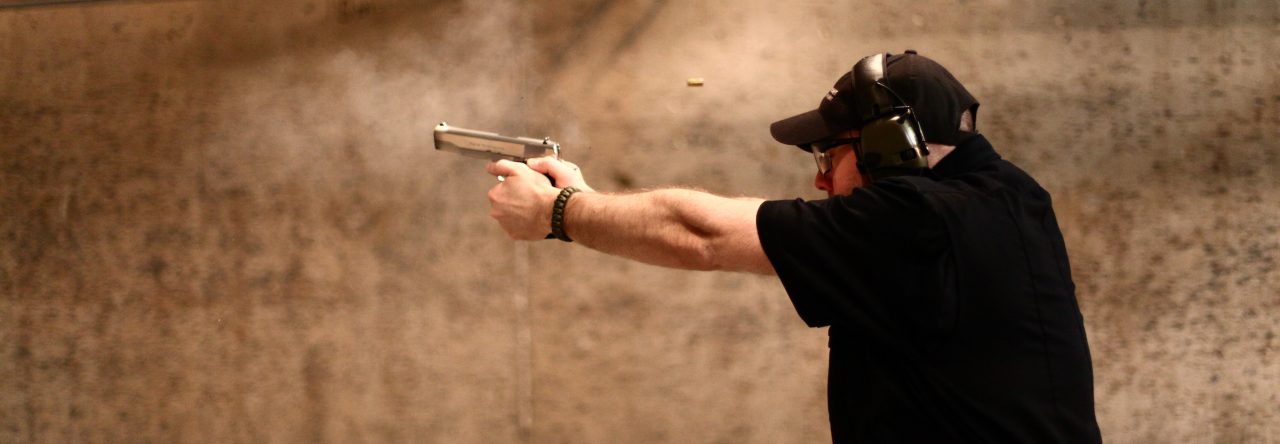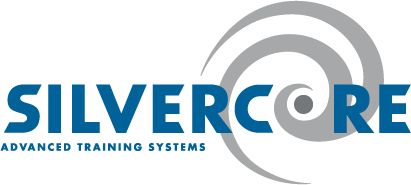Many times throughout the year Silvercore gets asked “How do I import (or export) a firearm in Canada?“. We wanted to provide you with all the in’s and out’s of importing and exporting firearms in Canada and make it smooth sailing for you to safely, and legally get your firearm into (or out of) Canada.
What do you need to Import (or Export) a Firearm in Canada?
What are the legal requirements for importing and exporting firearms?
There are a few different legal requirements which need to be followed when it comes to importing or exporting firearms. The first we’ll touch on those that relate to Canada. There are governing bodies that have their own regulations which need to be followed. In this section we will review the following:
- Canada Border Services Agency, or CBSA
- Global Affairs Canada
- The Criminal Code and The Firearms Act.
So let’s begin!
1. CBSA, Importing and Exporting Firearms, Weapons and Devices.
Review Memorandum D19-13-2, effective as of May 29 2019. This document not only goes over a briefing of things most recently changed, legislation, the definitions of things like Action, Ammunition, Authorization to Carry (ATC), Authorization To Transport (ATT) and more, but also describes in great detail prohibited weapons and ammunition. Knowing what is considered prohibited will save you a great deal of grief when importing or exporting a firearm.
Additionally, you’ll find the import and export procedures. But we’ll keep this simple and break it down for you!
If importing a Non-Restricted Firearm
In addition to the 18+ age and valid PAL which has the proper authorization for the class of firearm which you plan to import, you’ll also need the following:
-
-
- Verify if you need an import authorization from Global Affairs Canada, more on that below.
-
If importing a Restricted Firearm
In addition to the 18+ age and valid PAL, you will also need the following:
-
-
- Be authorized owner to which the Restricted firearm is registered to with the Canadian Firearms Program, or CFP and have your Firearm Registration Certificate,
- Have a Long Term Authorization to Transport, or ATT in order to Transport the firearm (this is obtained by being a member of a recognized gun club or range),
- Obtain an import authorization from Global Affairs Canada.
-
Something worth noting is that you can generally only import a restricted firearms if you are able to show that you have a need for that firearm, this could be something such as needing it to be able to take part in an organized target-shooting event.
Ensure you are properly covered, Join The Silvercore Club!
2. Import Controls and Import Permits handled by Global Affairs Canada
Apply for an Import Permit. In order to apply for this you’ll need to complete an Application for Import/Export Permit EXT-1466. (you’ll need Adobe Reader to load this file)
Be sure to include your application with a cheque for the corresponding total value of goods otherwise the permit will not be issued. The fee schedule can be found here.
3. The Criminal Code and the Firearms Act.
You’ll need to keep in mind the Criminal Code and the Firearms Act as this outlines the offences you could face if you import or export a firearm illegally and who is authorized to import or export. More on this below.
As a final note on things you need to do, don’t forget that you will also need to keep in mind the country where the firearm is coming from, as well as any other country the firearm will pass through and their legal requirements.
What offences could be faced for importing or exporting firearms illegally?
We’ll keep the legal jargon out of this summary- if you want to read that you can find it here in the Criminal Code of Canada.

Importing or exporting knowing it is unauthorized
The punishment when it comes to a firearm is imprisonment for up to 10 years and minimum punishment of 3 years (if first offence), or of 5 years (if second or subsequent offence)
In other cases of an indictable offence, imprisonment up to 10 years and a minimum punishment of imprisonment of one year.
Unauthorized importing or exporting
Imprisonment for up to 5 years for an indictable offence, or if guilty of an offence punishable on summary conviction.
Who is authorized to import and export a firearm?
35 (1) A non-resident who does not hold a licence may import a firearm that is not a prohibited firearm if, at the time of the importation,
(a) the non-resident
(i) is eighteen years old or older,
(ii) declares the firearm to a customs officer in the prescribed manner and, in the case of a declaration in writing, completes the prescribed form containing the prescribed information, and
(iii) in the case of a restricted firearm, produces an authorization to transport the restricted firearm; and
(b) a customs officer confirms in the prescribed manner the declaration referred to in subparagraph (a)(ii) and the authorization to transport referred to in subparagraph (a)(iii).
So what about airguns, replica firearms, and antique firearms? Can I import / export them?
Replica firearms are prohibited from entering Canada.
- are designed or intended to exactly resemble a firearm with near precision;
- are not reproductions of antique firearms; and
- may include airsoft or blank guns.
Replica firearms are classified as prohibited devices. Individuals cannot import them into Canada. For more information on replica firearms see Memorandum D19-13-2, Importing and Exporting Firearms, Weapons and Devices.
Antique firearms can be imported to Canada- conditions apply
An Antique firearm can be imported as long as it is considered to be Antique as outlined under the Criminal Code, and as long as you are a Canadian resident or a visitor to Canada. You won’t need to register an antique firearm, and you do not need a licence if you are the owner of one, however the proper safe storage and transportation requirements will all still apply.
What weapons or devices are prohibited from entering Canada?
*Please note that this is not an exhaustive list, but common weapons and devices prohibited from entering Canada.*
Weapons:
- automatic knives such as switchblades;
- centrifugal knives such as flick knives or butterfly knives;
- gravity knives;
- mace or pepper spray designed for use on humans;
- nunchaku sticks;
- shuriken (throwing stars);
- manrikigusari or kusari (fighting chains);
- finger rings with blades or other sharp objects projecting from the surface;
- Taser and stun guns shorter than 480 mm;
- crossbows designed for one-handed use;
- crossbows 500 mm or shorter;
- Constant Companion (belt-buckle knife);
- push daggers;
- devices shorter than 30 cm concealing a knife blade (e.g. knife-comb);
- spiked wristbands;
- blowguns;
- Kiyoga or Steel Cobra batons (spring batons);
- spring-loaded rigid batons (triggered by a button or lever);
- morning stars; and
- brass knuckles.
Devices:
- silencers or devices designed to muffle or stop the sound of a firearm;
- certain cartridge magazines above a given capacity. Generally, cartridge magazines are limited to 5 rounds for centre-fire, semi-automatic rifles or shotguns and 10 rounds for semi-automatic handguns, with exemptions for certain magazines;
- bullpup stocks;
- replica firearms (see additional information on replica firearms below); and
- devices prohibited by regulations.
Can I ship firearms?

- When shipping, the item must be shipped in a sturdy, non-transparent container. This container should be hard to break into and should not break open accidentally during transport.
- There must not be any markings on the outside of the container which indicate there are firearms inside- unless the marking is an address.
- The Canadian Firearms Program, CFP, recommends that you label an envelope “Customs Documents” and attach it firmly to the outside of the container. You can put any waybills, import permits, or export permits into the envelope.
- You must declare all firearms at Canada Customs and pay applicable duties and taxes.
Where can updates be found relating to firearms regulations?
It’s important that as a safe, legal and responsible firearms owner you’re always staying up to date with any applicable changes. Updates can be found online the RCMP Canadian Firearms Program section of the website under ‘Highlights’.
How can I learn more about firearms and firearms related Information?
There is a number of ways to find the information that you’re looking for, but for the sake of bringing you the easy access of information you may be on the look for, we would recommend any of the following.

- Listen to The Silvercore Podcast. The Silvercore Podcast discusses matters related to hunting, firearms, hiking, outdoor adventure and the people and businesses that comprise the community all from a uniquely Canadian perspective.
- Join the Silvercore Club to receive exclusive club discounts with participating retailers (some of whom sell hunting related products) – and the Silvercore Club Facebook Community. There are many individuals who hunt and have experience in hunting who are happy to share their knowledge and all it takes is a little ask and community involvement.
- Take a Silvercore Online Course. Silvercore has a number of different online courses whether you’re looking to obtain your PAL, go hunting, become an RSO, or even just want to make sure you’re safe in bear country.
DISCLAIMER:
Please note that this post was created and intended for educational purposes and acts only as a guide and is by no means considered a legal document.
As regulations and legislation change from time to time, Silvercore and its subsidiaries make no warranties whatsoever, either express or implied, oral or written, in fact, or by operation of law or otherwise, regarding the import or export of any firearm or device mentioned throughout this post.
Individuals should always check with the appropriate governing bodies regarding legislative and regulatory specifications for the import and export of firearms into or out of Canada.




Leave a Reply